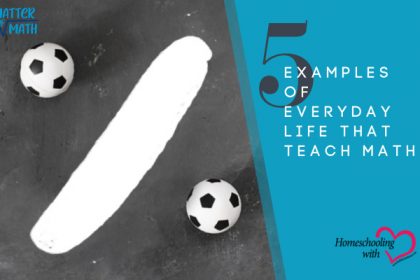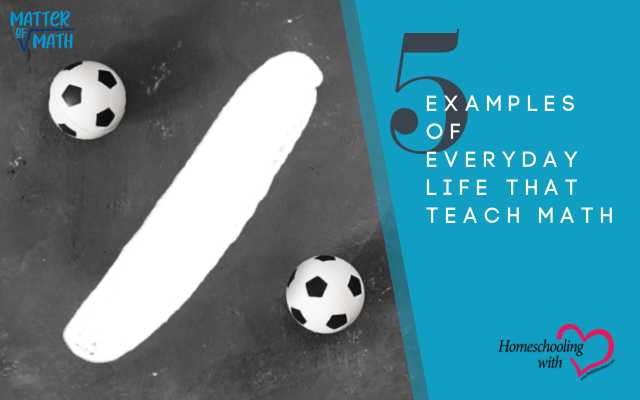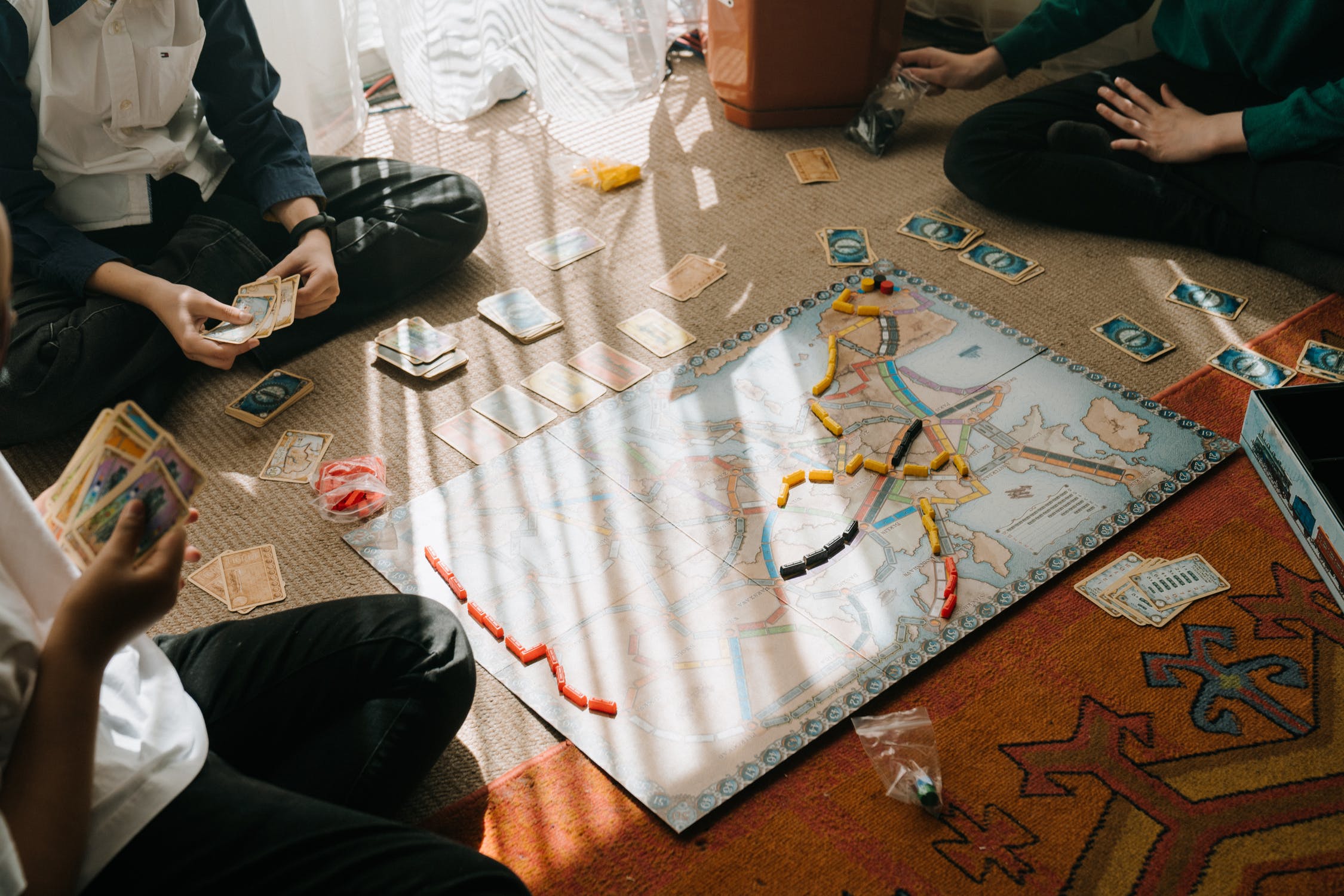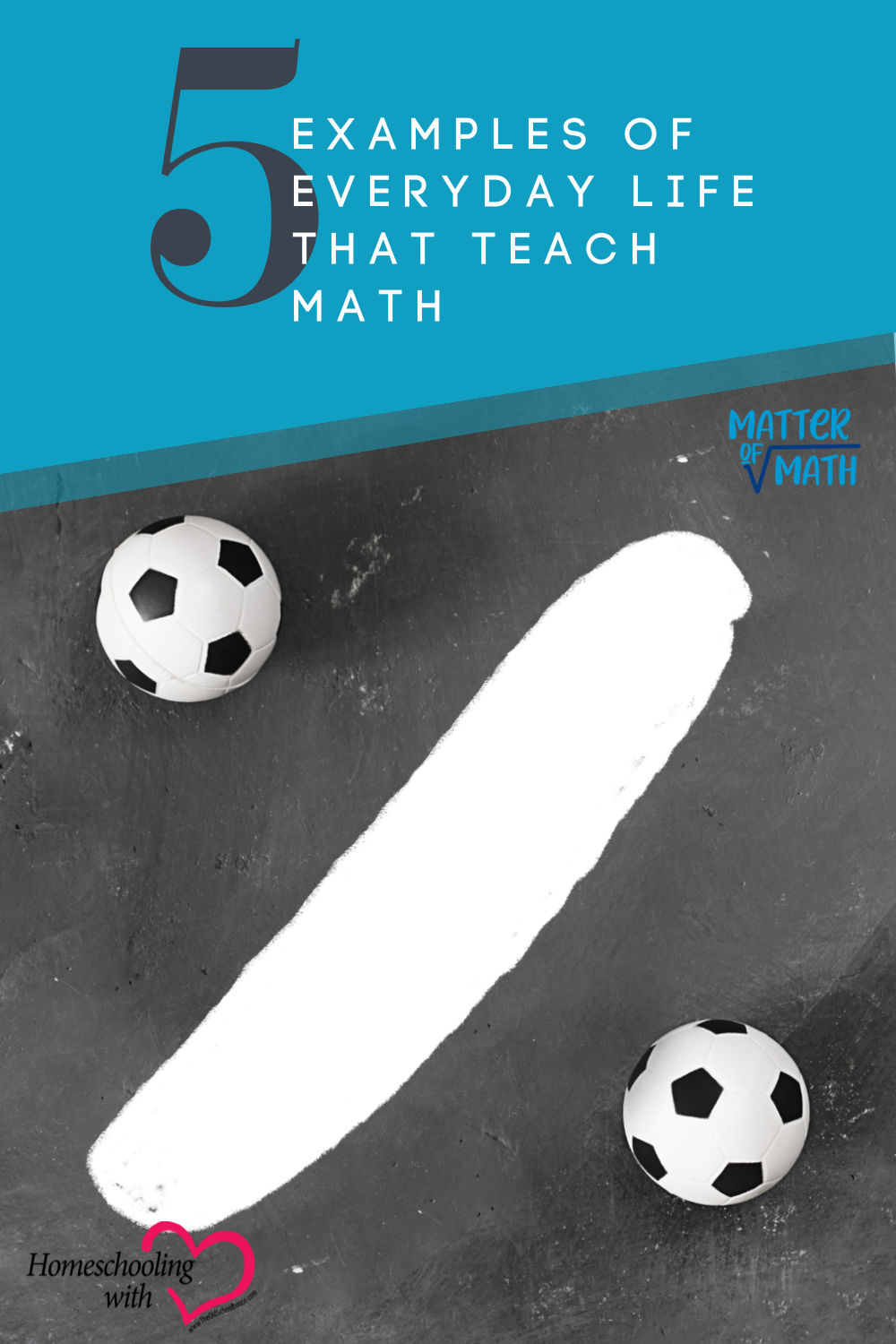Living with Math: 5 Examples of Everyday Life That Teach Math


We use math every single day of our lives without even realizing it. It is a universal language, and if you look close enough – or from far enough! – you’ll be able to see math and patterns in almost everything.
For most of us homeschooling parents, we want math to be simple for our children. We want it to be fun and engaging and for them to be able to use it efficiently when they need it.
Yet math seems to be one of those subjects that many of us are afraid to teach and many children find frustrating.
Most homeschoolers choose to follow a curriculum. Jesse Woods, homeschooling dad of two and creator of Matter of Math, uses a curriculum with his two children but also recommends making math fun by doing plenty of real-life math activities with your kids.
Here are five real-life examples of activities you can use to teach math in your homeschool without your child realizing it’s a lesson in the first place!
Baking
Baking is full of important math skills. Weighing and measuring are two of the most obvious skills that can be developed through baking. You can teach children the different types of measurements: ounces, pounds, cups, teaspoons, and metric conversions.

Fractions can also easily be taught through baking, from breaking up a chocolate bar for young children to converting fractions to decimals and comparing fractions for older children.
Recipes can be doubled or halved depending on how many people they are baking for – another great skill to learn!
All recipes also require some application of time. Whether it’s how long something needs to be baked for or how long the recipe will take to make, baking is a great activity and a fun way to get your learner(s) comfortable following timed instructions.
Sports
There is a seemingly endless list of benefits to keeping your kids active including lower obesity rates, reduced risk of chronic disease, and improved academic performance.

Those factors alone are enough for us to encourage our children to get involved in a sports team, but we can also teach math very easily through sports.
The best bit is, your children will be having so much fun they won’t even realize it!
In athletics, races are measured in time so you can give the children the responsibility of a stopwatch to time each other. If you want to take this further, have them write down the times and organize the times from slowest to fastest. Older children can practice their percentages by working out how much faster the fastest was than the others.
Most sports involve some element of scoring. Some are simpler than others, but games such as table tennis, basketball, and cricket are a bit more complex.
Believe it or not, there are also mainstream video games that aim to teach math or science through sports. Madden NFL: Football by Numbers requires students to decide the angle and velocity that a quarterback should throw to a pass-catcher, and Minecraft-style games are brilliant for developing arithmetic.
Shopping
Shopping is an excellent weekly chore that you can get your children involved in. You can help them to learn about consumer choices, healthy eating, colors, categorizing, and there are ample opportunities to learn math too.

To begin with, you can ask your children to help you write the shopping list. This could include some element of categorization like organizing the list into freezer items, tinned goods, etc.
At the shop, set a budget and recommend they look for signs advertising specials and reduced items. Older children can work out which purchase provides better value if they are different weights and add up the cumulative total as you add items to the basket or shopping cart.
Younger children can round the figures up and play a guessing game to estimate what they think the entire shop will come to.
When you arrive at the till, give them the responsibility of paying for the items and checking the cash that they receive so that they get used to handling money in real-life situations.
Board Games
There are very few children who don’t like playing games, and there is so much math to learn in tabletop games not to mention a bunch of other great skills: communication, decision making, managing competition, strategic thinking, and the ability to focus just to name a few!

Kids learn best when they are thoroughly engaged in something and are having fun. Board and card games are a hands-on way to help them make connections and understand new concepts.
From simple card games that teach children number recognition and simple counting skills to games like Shut the Box, Uno, Yahtzee, and Monopoly. You can pick and choose.
Some of these games require strategy and reasoning skills. Others require an understanding of money, adding, multiplying, dividing, and taking away.
If you discourage competitive activities, there is a host of cooperative board games to choose from!
Road Trips
Don’t write off that time in the car which you spend traveling between activities. There are plenty of fun ways to squeeze in some math practice here.
Younger children can recognize shapes in all of the different things they spot while you’re driving; octagonal stop signs, circular wheels, and rectangular traffic lights.
Older children can figure out how long it will take you to arrive at your destination, using the speed and distance that you’re covering.
Alternatively, they could work out the average speed of the journey by using the distance and duration of the journey.
Car journeys also provide the perfect opportunity to sing rote songs to learn essential facts such as the multiplication tables.
When children can relate math to real-world examples and they are given a fun, engaging task to do, math will no longer be the tedious and boring subject that you only use flashcards and a repetitive curriculum for.
Incorporating a few of these activities into your homeschooling week will make all the difference to those children who find math to be a challenge.
 Jesse Woods is the creator and editor of Matter of Math, a website that teaches math in a simple way to people of all ages. He holds a degree in mathematics and physics and taught math and science in high school classrooms before stopping to teach his own, homeschooled children. From childhood, he has engaged in Mensa Math and lateral thinking classes and has been passionate about education and math.
Jesse Woods is the creator and editor of Matter of Math, a website that teaches math in a simple way to people of all ages. He holds a degree in mathematics and physics and taught math and science in high school classrooms before stopping to teach his own, homeschooled children. From childhood, he has engaged in Mensa Math and lateral thinking classes and has been passionate about education and math.

































